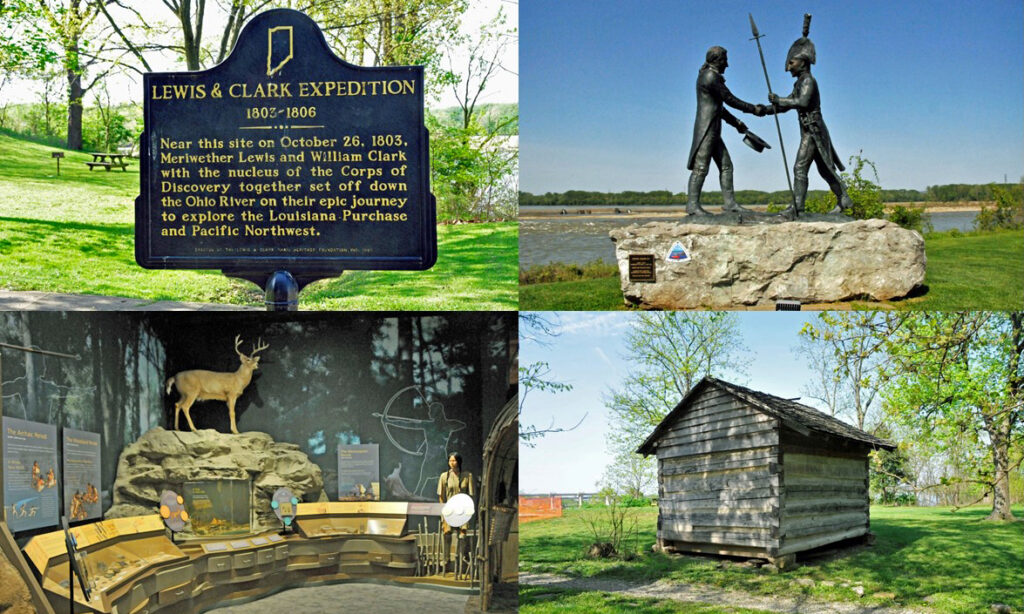Last week’s visit to Falls of the Ohio State Park outlined the 390-million-year history of its extraordinary fossil beds. Today, we will explore the human history of the area.
The Falls of the Ohio, which drop 26 feet over two miles, are created by outcroppings in the Ohio River between Louisville and Clarksville, Indiana. Native Americans and bison used the outcroppings as a natural ford. At the time of the American colonies, the falls presented the only barrier to river travel between Pittsburgh and the Gulf of Mexico. In 1778, during the American Revolution, Colonel. George Rogers Clark established a settlement on Corn Island, just east of the falls, that became Louisville. In 1803, Clark, by then a Revolutionary hero, built a retirement cabin above the lower end of the falls on the Indiana side. Later that year, Clark’s brother William, a surveyor who lived on the family plantation near Louisville, came to George’s house, where he met Captain Meriwether Lewis, who had traveled down the Ohio River from Pittsburgh. On October 26, 1803, Lewis and Clark set off with a few men down the Ohio River to begin what is now known as the “Lewis & Clark Expedition.”
The 16,000-square-foot Interpretive Center at Falls of the Ohio State Park, begun in 1992, includes impressive immersive exhibits explaining the human history of the area around Clarksville (named for George Rogers Clark), including that of the Native Americans who once lived there. A large sculpture near the Center remembers the meeting of Meriwether Lewis and William Clark. A seven-acre section of the park, separated from the remainder by private property, contains the remains of a reproduction of George Rogers Clark’s house, which burned in 2021, and a log cabin, open for viewing, that represents the home of Venus and Ben McGee, Clark’s African American indentured servants.

Comments are closed.